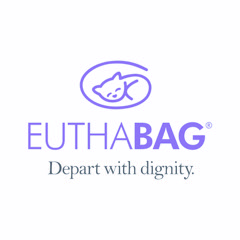Companion Animal Euthanasia Position Statements and Guidelines
The following represents the teachings of the Companion Animal Euthanasia Training Academy (CAETA). All educational content adheres to them, with the understanding that each euthanasia experience is unique and veterinary professionals will adapt to the needs of the patient and client.
Indwelling catheterization for venous euthanasia solution injections
Indwelling intravenous catheters are recommended for all patients being euthanized via the vein. This remains true, independent of patient consciousness (awake or anesthetized). Indwelling catheters increase the likelihood of proper solution administration, thus reducing the risk of complication during the procedure. Catheters already in use during hospitalization should be thoroughly checked for patency before administering caustic agents that may cause pain.
Pre-euthanasia sedation/anesthesia provided for all patients
Sedative and/or anesthetic drugs are recommended for all patients before technical aspects of the euthanasia procedure begin, i.e. indwelling catheterization. These drugs are best given in combination subcutaneously, intramuscularly, or orally to promote relaxation and reduce restraint in preparation for the procedure.
Unconsciousness required before intraorgan injections
All patients to be euthanized via an intraorgan injection must first be rendered unconscious through the use of anesthetic drugs. Patients should not experience pain or discomfort during the procedure. Thorough assessment of the depth of unconsciousness should be conducted before the injection begins. If the patient displays discomfort during the injection, it should be immediately stopped and more time given or more anesthetic drugs provided until full unconsciousness is achieved.
Hospice-supported natural death
Animal hospice support is recommended for all animals approaching the natural end of life. Hospice-supported natural death includes palliative medicine, pet owner education about disease trajectories, and emotional support for both patient and owner. Euthanasia, either passive or active, should be advocated for if the path towards natural death leads to patient suffering that can no longer be managed.
Grief support
The very nature of euthanasia comes with a heavy emotional burden. All clients and veterinary staff should be provided with access to grief support materials. These resources can be in the form of printed material, electronic documents, websites, support groups (virtual or in-person), grief counseling, and wellness retreats. Persons suspected of having complicated grief should be directed to mental health professionals.
Client pre-planning
Planning ahead can relieve much of the fear and anxiety that can accompany euthanasia appointments. This will also aid veterinary staff, allowing them to focus on the emotional needs of the clients. As much as possible, decisions should be made in advance regarding location, who can attend, comfort items, staffing, sedation, euthanasia technique, aftercare wishes, memorial items, and payment. A client should be asked if they wish to remain present and to clarify if they have been present for a euthanasia before.
Euthanasia technique options
There are five common injection sites for euthanasia using pentobarbital in most companion animals. While Intravenous (IV) may be the route that most practitioners are familiar with, it is not always advisable or even possible. It is important to be familiar with the alternative intraorgan injections such as intracardiac (IC), intrahepatic (IH), intrarenal (IP) and intraperitoneal (IP), so the practitioner can skillfully adjust from plan A to plan B or C when necessary. The goal is to be able to reach for the best technique given each situation. When pentobarbital is not available, the practitioner should be able to achieve euthanasia using alternative chemical or inhalant agents.
Reducing anxiety during the procedure
Reducing fear, anxiety, and stress in patients remains paramount during the euthanasia procedure. Practitioners should use low-stress handling techniques, as well as concepts like considerate approach and gentle touch whenever possible. Pre-euthanasia sedation and anesthesia are essential in reducing anxiety and restraint. Additional anxiety is further reduced by maintaining the human-animal bond and keeping owner and pet together through the entire procedure.
Privacy before and after death
Offering privacy to the client during the euthanasia appointment is very important for their emotional wellbeing. While some clients will prefer that the veterinary professional stay close by at all times, it is appropriate to offer time alone with their pet so they can say goodbye in their own personal way. When short on time, in emergent situations, or when in crowded environments, privacy may be harder to achieve but should still be offered if attainable.
Controlled substance handling
In most cases, euthanasia of companion animals will require the use of controlled drugs. Each country and state/province will have certain regulations with regards to the transport, use, and record keeping of these substances. It is vital that practitioners abide by these rules and regulations, to protect the public as well as themselves, and uphold the integrity of the profession.
Quality of Life (QoL) scales
Quality of life scales are widely used in veterinary medicine. They are excellent tools in beginning the difficult discussion about end-of-life and giving clients a structured approach to evaluating their pet’s wellbeing. However, clients should not be expected to be able to read the subtle cues of pain and suffering in their own pets, particularly given their emotional connection to them. QOL scales should not be considered as a substitute for professional guidance, but rather an additional tool to facilitate the discussion and allow the practitioner to better support the client. Validated scales are recommended.
Contaminated carcass handling
Euthanasia conducted through the use of pentobarbital sodium causes tissue contamination and alters the way the body may be handled or disposed of. Veterinary personnel should know the manner of planned body disposition and choose the appropriate euthanasia agent based on this knowledge. If a client will be handling body aftercare on their own, veterinary personnel should inform on the risks euthanasia drugs pose to the environment, including animals if ingestion occurs. Proper burial guidelines should be discussed with clients and documented.
Medical futility
Generally the term medical futility applies when, based on medical data and professional experience, it is determined that a medical intervention is no longer beneficial to the patient. In the field of hospice and palliative care, the approach is to move from curing to caring for an animal, thus there is an overall change in the philosophy of care. Instead of providing unrealistic hope, practitioners should be honest about the expected path of death and decline, and give the client time to focus on making the final days of their pet’s life comfortable and meaningful. If euthanasia is warranted, especially in the absence of available hospice care, it should be mentioned as an option to prevent patient suffering.
Respect for deceased companion animals
Deceased companion animals are to be respected and handled in a respectful manner. Following death, animals may be placed in respectful containers or wrapped in blankets/shrouds as requested by owners or as standardized by the veterinary service or aftercare company. Trash bags or similar are not befitting to the human-animal bond and are to be avoided.





